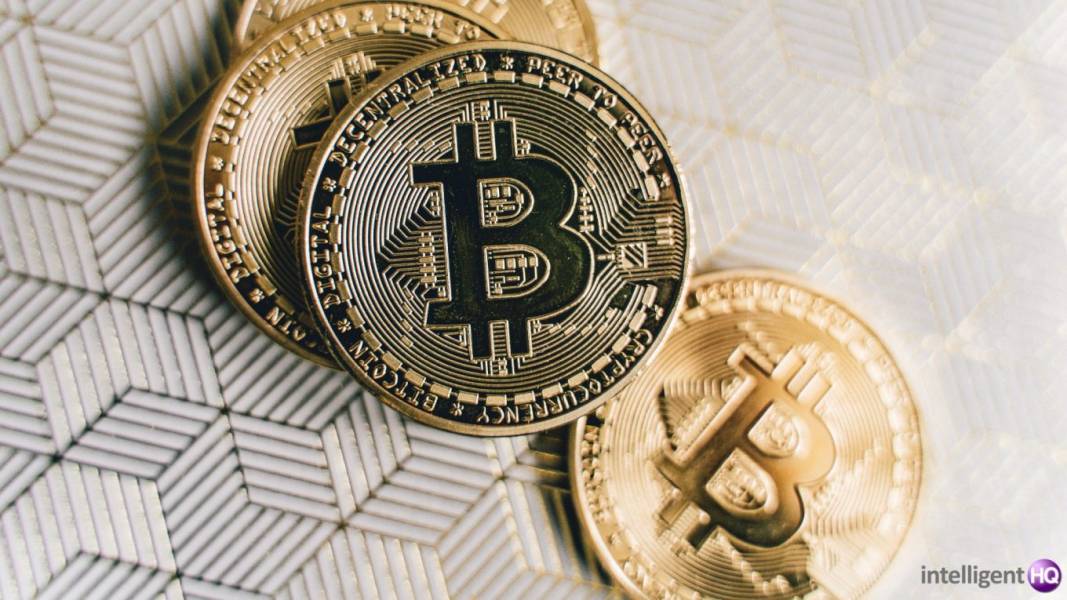Digital currencies have been making headlines recently, but for all the wrong reasons. Investor Daniel Calugar points out, though, that those negative headlines are focused mainly on cryptocurrencies.

The overnight failure of the cryptocurrency exchange FTX, and the subsequent criminal charges handed down to its founder, the one-time “golden boy” of cryptocurrency, Sam Bankman-Fried, certainly have brought negative attention to digital currencies.
As people around the world are becoming more and more accepting of cryptocurrency in general — even in the wake of catastrophic stories like that of FTX — countries across the globe are working on digital currencies of their own.
They’re called central bank digital currencies, and they’re digital versions of fiat currencies that are issued and backed by central banks. It’s the next step in the movement away from cash and toward digital financial transactions that started years ago.
There are many reasons why governments are considering issuing digital currencies, including the ability to reduce transaction costs, improve monetary policy and increase financial inclusion. But, at the same time, these digital currencies pose serious questions surrounding security, privacy, and the role that central banks should have in the financial system.
Below, Dan Calugar examines central bank digital currencies in full detail to analyze the possibilities for the future of money.
What Are Central Bank Digital Currencies?
Central bank digital currencies are digital forms of currency issued by central banks operating under federal governments. Instead of printing physical money, the banks instead issue new digital forms of the currency.
These digital forms of currency aren’t pegged to any physical commodity, which is the same as fiat money. So, in that way, they aren’t too different from traditional currency. For example, while the U.S. dollar used to be backed by physical gold, it hasn’t been so since the 1970s.
In the U.S., the Federal Reserve Bank is the central bank responsible for issuing digital currency. Its principal job is to support the overall financial services for the government and the system of commercial banks while also setting monetary policy — such as raising or lowering benchmark interest rates — and issuing money.
Are Central Bank Digital Currencies Just Government-Run Stablecoins?
Those who are familiar with cryptocurrency may feel that central bank digital currencies sound an awful lot like stablecoins. However, Daniel Calugar says that while the two are certainly similar, there are some major differences.
First, stablecoins are issued by private companies and not government entities. Stablecoins are essentially cryptocurrencies that are supposed to be “stable” in value because they are pegged to some other financial instrument, commodity, or currency. USD Coin, for example, is pegged to the U.S. dollar.
However, while stablecoins are generally considered much safer than more well-known cryptocurrencies such as Bitcoin, they still are susceptible to volatility. For instance, in early March, USD Coin experienced a significant and rapid drop in value, falling to 89 cents. What this means is that one USD Coin, at the time, was only worth 89 cents. That 11-cent difference is certainly significant when extrapolated for a larger sum of money.
Second, all cryptocurrencies, including stablecoins, are decentralized. This means they are not run from one central entity but are instead based on a decentralized database, where transactions are verified by third parties.
Central bank digital currencies, by contrast, are centralized currencies, as they are issued and operated by governments.
Types of Central Bank Digital Currencies
Digital currencies issued by central banks are relatively new, but many countries are already considering the possibilities. In fact, Dan Calugar points out that a March 2023 report by McKinsey & Company found that 87 countries are currently exploring the use of digital currencies. And those countries account for more than 90% of the global GDP.
While central bank digital currencies, in general, refer to the same thing, there are many different types that are either being used or considered.
One already in use in many Eastern Caribbean countries is called DCash. They have implemented this via a model based around accounts, where consumers hold deposit accounts with the country’s central bank directly. Under this approach, U.S. consumers would have bank accounts directly with the Federal Reserve.
China debuted its central bank digital currency pilot program, e-CNY, at the 2022 Olympic Games. This model takes a completely different approach from the one described above. In this case, banks in the private sector are responsible for distributing and then maintaining accounts for customers that hold the digital currency.
China’s approach is certainly more hands-off from a government standpoint, with the government serving as the regulator rather than the direct issuer of the digital currency accounts.
The European Central Bank is considering yet another type of digital currency. In their model, financial institutions that hold special licenses would operate their own permissioned node on the central blockchain network. Essentially, the bank would serve as a conduit that distributes a digital version of the euro.
This model may make more sense for the European Central Bank than it does for the U.S. since the euro is a currency used across multiple countries.
Many crypto enthusiasts are touting yet another model — one in which fiat currency is issued as fungible anonymous tokens. This anonymity would help to protect the privacy of consumers as they use their digital money. And privacy is a major concern of switching to digital currency, as Daniel Calugar will explain below.
Why Are Countries Moving Toward Central Bank Digital Currencies?
Why are countries around the globe so interested in digital currencies all of a sudden? There are many reasons why central banks would be interested in issuing digital currency, outlined below.
Decreased Usage of Cash
Even before the COVID-19 pandemic, financial transactions were moving away from cash. Instead, consumers already conduct most of their financial transactions in some digital payment form, whether it be in-person credit and debit cards, online bill payments, or money transfers using third-party payment apps such as PayPal.
Once the pandemic hit, cash usage plummeted even further. Influenced by factors such as hygiene concerns and the move to even more e-commerce purchases, people just stopped using cash the way they used to.
The same McKinsey report noted above found that cash usage dropped by one-third throughout Europe from 2014 to 2021. And in Norway, only 3% of all payments are done with cash.
All of this has caused governments to rethink what the role of central banks in the financial system should be.
Increased Ownership of Digital Assets
At the same time as cash use is declining, people are increasing the number of digital assets they own. Whether it be cryptocurrency or non-fungible tokens (NFTs), people are becoming more comfortable with and interested in owning digital assets issued by private entities.
The variety of available digital assets even has the potential to threaten fiat currency, at least in the way it’s being used now to measure value.
Global Payments
The world seems to be getting smaller every day, and that’s especially true in the financial industry. As a result, global payments are becoming increasingly common, despite being extremely challenging to conduct through traditional means.
That difficulty has caused many people to go around central banks and governments by turning toward anonymous and fully digital forms of payment such as cryptocurrency. Not only does this add a level of privacy for the user, but it also makes these traditionally complicated transactions easy.
Because of this trend, central banks are losing control of local governance over these payments. Central bank digital currency, then, would be central banks’ response to global digital payments.
Possible Benefits of Central Bank Digital Currencies
The case for central bank digital currencies isn’t completely cut and dried. There are plenty of advantages they provide, but there are also plenty of drawbacks. So, while governments certainly believe that they would be very beneficial, are they all they’re cracked up to be from the consumer’s standpoint?
Below, Daniel Calugar examines some of the main benefits of central bank digital currencies.
Reliable
There’s no denying that consumers across the world are already using digital currencies. The problem is that many of these currencies are not very stable. One day, you could be riding high, while the next day, the value of your assets can plummet.
Take Bitcoin, for example. After reaching a record-high mark of $69,000 in late 2021, it lost almost 70 percent of its value by mid-2022. One day in June of that year, Bitcoin dropped 15 percent. In other words, what was worth $1 on Monday was only worth 85 cents the very next day.
Since these digital currencies will be issued by central banks, they won’t be subject to that type of volatility. So, in essence, they provide the best of both worlds — the many use cases for a digital currency with the stability of fiat currency. It’s very unlikely that a U.S.-backed digital currency, for instance, would ever drop 70 percent over six months.
Secure
While a lot of people point to the anonymity and decentralized nature of cryptocurrency as being beneficial from a security standpoint, there’s still nothing that’s necessarily stopping these digital currencies from being hacked. However, having digital currencies issued by central banks could increase the security of digital payments.
This is because the risk of fraud with central bank digital currencies is very low, especially compared to other types of digital currencies. In addition, central banks could easily use cryptography with private keys to allow users to sign their transactions digitally. Not only would this add a layer of physical security to the asset, but it would also serve as peace of mind for consumers.
Reduced Transaction Costs
Providers of financial services spend a lot of money building, maintaining, and protecting their physical infrastructure. If they were to move away from fiat currency to digital finances, they could save a boatload of money. In fact, McKinsey estimates that these providers could save roughly $400 billion every year through this shift.
Consumers should care about these reduced costs for one major reason: It’s possible that at least some of these reduced costs could be passed onto them. Whether it’s through the elimination of monthly service charges for owning and maintaining certain financial accounts, lower interest rates on loans, or lower fees on transactions — to name a few — consumers could certainly directly benefit from these reduced costs.
Of course, there will be some added costs for the providers in terms of the additional technology that will be required to issue, maintain, and secure these digital currencies and their accounts.
Improved Monetary Policy
By switching away from paper fiat money to digital currency, central banks could narrow their responsibilities. For example, depending on how it’s done, central banks could entrust intermediaries with the distribution of digital monies, which would preserve their own role in providing services on the front end.
Dan Calugar says this could add value to the central bank rather than take away from it. Instead of actually issuing the currency, central banks could put safeguards in place to mitigate potential risks and take other overarching roles in the economy.
Increased Financial Inclusion
A major potential benefit to central bank digital currency is increased financial inclusion. While more than 95 percent of adults in the U.S. have a bank account, more than one billion people worldwide do not.
One of the main reasons for this is access. Traditional banks force customers to go to branches to sign up for accounts and to do their banking. This just isn’t realistic for people who live in very rural areas or who don’t have adequate transportation or time.
Digital currency could significantly increase access to banking through mobile applications. Not only does this benefit consumers, but it does the same for financial providers, who could enter previously untapped markets.
Multiple Uses
People often think of digital currencies as being used only online, but with central bank currencies, that’s not the case. These currencies can be used online, of course, but they can also be used offline. For example, think of digital payment forms you use now, such as Apple Pay.
Instead of connecting a credit or debit card to your Apple Pay account, you would link your central bank digital currency account and then use it to pay at checkout counters at retail stores and more while you’re shopping in person. It would be relatively easy for payment systems to integrate digital currencies into their offerings.
Cross-Border Payments
As previously mentioned, a key advantage of central bank digital currencies is they would help to facilitate payments across borders. Right now, this is a significant challenge when using fiat money. There are a lot of hoops to jump through to conduct global transactions using fiat money, and digital currency would certainly work to curtail those challenges.
Concerns About Central Bank Digital Currencies
While there are a lot of potential benefits to central bank digital currencies, there are concerns about them as well. Daniel Calugar discusses some of these below.
Privacy
Privacy is the most common concern raised in the discussion of central bank digital currencies. For all the limitations that cash provides as a currency, one thing it does do is preserve people’s privacy.
The federal government doesn’t know who owns a $20 bill, for instance, or what they do with it, but they’ll certainly have the ability to know who owns every cent of a digital dollar and potentially what they do with it.
This concern is raised not just by people who are doing illicit things with money but those who conduct innocent and honest financial transactions every day.
The argument is that there really isn’t any need for the government to know who is doing what with their money as long as it is legal. With cash, it is challenging for the government to trace where every dollar is spent. While there are certainly tactics for tracing cash used for illicit purposes, the government doesn’t know whether one person bought a pack of gum with a $10 bill or gave it to a friend in exchange for a used shirt.
With central bank digital currencies, the potential exists that literally every cent of currency issued, sent, and spent can be tracked by the government. Since the central bank is the issuing agency of this currency, digital trackers can be placed on the digital money to ensure its legitimacy. While that’s a good thing, the negative flip side is that the government would have the ability to know where that money went through its lifecycle.
This may seem like a conspiracy theory, but it is a true concern. If the government has the ability to surveil even the most mundane of financial transactions, will it? And if it does, what are the associated security and privacy concerns?
The Role of Central Banks
Finally, there’s the question of what role central banks should play in the overall financial system. Some believe they should take on an expanded role in which they help to innovate new ways of creating, issuing, and using currency, while others think they should serve more in an advisory role and have less direct control over big switches in currency.
Either way, if governments move toward central bank digital currencies, they could ultimately limit their central banks’ ability to implement monetary policy. And if central banks don’t have this control anymore, it’s possible this could lead to runaway inflation or even wider economic problems.
Because digital currencies are so new, there’s no way of knowing the precise effect they may have on the economy. As a result, there could be unforeseen consequences faced by both consumers and businesses — from within and outside of the financial services industry.
About Daniel Calugar
Daniel Calugar is a versatile and experienced investor with a computer science, business, and law background. He developed a passion for investing while working as a pension lawyer and leveraged his technical capabilities to write computer programs that helped him identify more profitable investment strategies. When Dan Calugar is not working, he enjoys working out, being with friends and family, and volunteering with Angel Flight.

Founder Dinis Guarda
IntelligentHQ Your New Business Network.
IntelligentHQ is a Business network and an expert source for finance, capital markets and intelligence for thousands of global business professionals, startups, and companies.
We exist at the point of intersection between technology, social media, finance and innovation.
IntelligentHQ leverages innovation and scale of social digital technology, analytics, news, and distribution to create an unparalleled, full digital medium and social business networks spectrum.
IntelligentHQ is working hard, to become a trusted, and indispensable source of business news and analytics, within financial services and its associated supply chains and ecosystems































